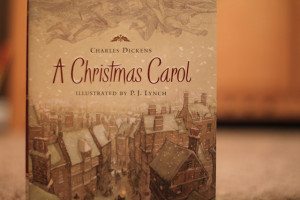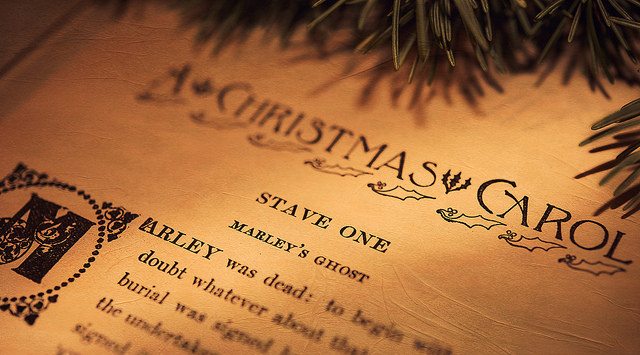Christmas through the ages according to literature
[dropcap]F[/dropcap]rom candlelit Christmas trees and snow-covered landscapes to carol singers and Christmas pudding – these are just a few of the iconic images that spring to mind when we think about the festive season. But it’s less known that many of our Christmas traditions have been popularised by literature.
Probably the mst memorable piece of literature centred around Christmas is Charles Dickens’ A Christmas Carol. Hugely popular since its publication in 1843, it has become embedded in our Christmas culture. Not only did the novel revive many of the traditions that we associate with Christmas today, such as carol singing and sending Christmas cards, but it also caused a surge in charitable giving, which has remained an expression of goodwill during this season.
An element of the Victorian Christmas which has not transferred into contemporary Christmas literature, though, is the focus on the supernatural. Like many novelists of the time, Dickens’ picked up on the Victorian fascination with the spirit world, shown through the pivotal roles of the Christmas ghosts.
Russian author, Nikolai Gogol, also explores the supernatural world in his book, The Night Before Christmas. Published in 1831, Gogol’s novel has a much darker storyline, featuring witches and devils, whose attempts to thwart a man’s love for his sweetheart ultimately fail, emphasising the power of love over evil.
Victorian authors also emphasised the importance of family at Christmas and childhood wonder. E.T.A. Hoffmann’s The Nutcracker, well-known nowadays from the ballet adaptation, is a tale of magic and childhood adventure that continues to captivate people with its enchanting Christmas spirit.
The Nutcracker… continues to captivate people with its enchanting spirit
Moving on to 1970, J.R.R. Tolkein’s Letters from Father Christmas were published posthumously and are another example of the Christmas focus on children. From 1920 until 1942, Tolkein crafted letters and pictures from Father Christmas for his children. Tolkein’s love and care for his children is evident from the amazing detail in these letters, which feature stories about the clumsy North Polar Bear and mischievous elves, as well as battles against the goblins.
In more recent years, writers have focused on the modern day pressures of Christmas time rather than the dreamy, idyll portrayals found in Victorian novels. Cecelia Ahern’s The Gift and Maeve Binchy’s This Year It Will Be Different show the burden of increased social commitments and provide a much more realistic view of Christmas, portraying the ups and downs of family life and strained relationships.
In more recent years, writers have focused on the modern day pressures of Christmas
However, these novels are not all doom and gloom. Binchy’s short stories offer light-hearted and witty snapshots, capturing the complicated expectations surrounding Christmas and Ahern’s novel demonstrates the importance of human relationships over materialism.
Through the ages, there have been many different depictions of Christmas. Although some aspects and attitudes have changed, there is still one message that remains constant: Christmas is a time of love.
Image Credits: Bill Young / Flicker (Header), Brendan C / Flickr (Image 1)

Comments